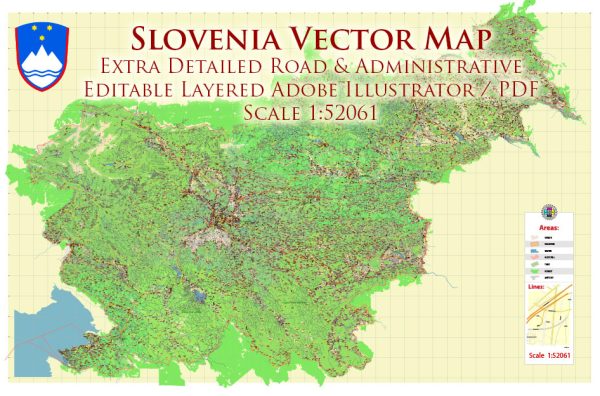The history of urban development in Slovenia is characterized by a blend of influences from various cultures and historical periods. Slovenia, located at the crossroads of Central and Southeast Europe, has a rich history that has shaped its urban landscapes. Here’s a brief overview:
- Roman Period: The Roman Empire had a significant impact on the region, and several Roman towns and trade routes were established in what is now Slovenia. Emona (modern-day Ljubljana) was a notable Roman settlement, and remnants of Roman architecture can still be seen in the city.
- Medieval Period: During the medieval period, Slovenia was part of the Holy Roman Empire and later the Habsburg Monarchy. Many towns were established or fortified during this time for strategic and economic reasons. Ljubljana, Celje, and Ptuj are examples of medieval towns that have preserved their historic character.
- Venetian and Habsburg Influence: Parts of Slovenia were under Venetian rule, especially along the coast, while the interior was part of the Habsburg Monarchy. This dual influence contributed to the diverse architectural styles seen in Slovenian towns.
- 19th Century: The 19th century brought industrialization and urbanization. Cities like Ljubljana saw the construction of new buildings and infrastructure during this period. The railway network, connecting Slovenia with other parts of the Austro-Hungarian Empire, also played a crucial role in urban development.
- Yugoslav Period: After World War I, Slovenia became part of the Kingdom of Yugoslavia. Urbanization continued, and new socialist-style architecture emerged during the Yugoslav period. Ljubljana, as the capital, experienced considerable development.
- Independence (1991) and Post-Independence Period: With the breakup of Yugoslavia, Slovenia gained independence in 1991. This period saw a surge in urban development, with a focus on modernization and infrastructure improvement. Ljubljana, in particular, has undergone extensive renovations and became known for its sustainable and pedestrian-friendly urban planning.
- European Union Integration: Slovenia joined the European Union in 2004, further influencing urban development through EU funding and cooperation. Sustainable urban planning, preservation of cultural heritage, and green initiatives have become key aspects of urban development.
- Contemporary Period: Today, Slovenia continues to balance modernization with the preservation of its historical and cultural heritage. Urban development projects often prioritize sustainability, green spaces, and a high quality of life for residents.
In summary, Slovenia’s history of urban development reflects its diverse cultural influences and geopolitical changes. From Roman foundations to medieval fortifications, Habsburg architecture, socialist-era developments, and contemporary planning, Slovenia’s towns and cities showcase a rich tapestry of history and modernity.


 Author: Kirill Shrayber, Ph.D.
Author: Kirill Shrayber, Ph.D.